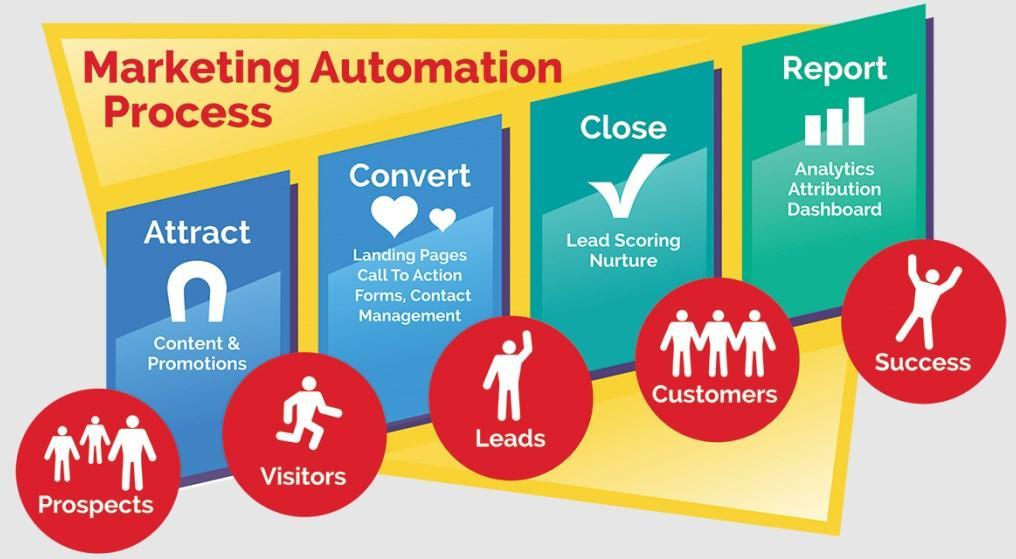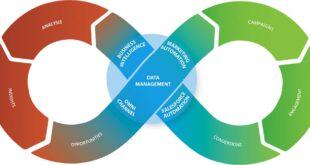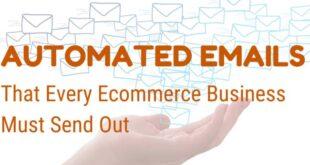Are you tired of spending countless hours on repetitive marketing tasks? Marketing automation might be the solution you’re looking for. In this article, we’ll cover the best practices for implementing marketing automation in your business, including its benefits, how to choose the right tool, and how to set up and optimize your campaigns.
Benefits of Marketing Automation
 Marketing automation can help you streamline your marketing efforts and save time and resources. Here are some of the main benefits:
Marketing automation can help you streamline your marketing efforts and save time and resources. Here are some of the main benefits:
- Increased efficiency: By automating repetitive tasks such as email marketing, lead generation, and social media posting, you can free up your team’s time to focus on more important tasks, such as strategy and analysis.
- Improved targeting and personalization: Marketing automation tools allow you to segment your audience based on behavior, demographics, and other criteria, and deliver personalized content and offers to each segment.
- Better lead management: With marketing automation, you can track and score leads based on their behavior and engagement with your content, and prioritize the most qualified leads for follow-up.
How to Choose the Right Marketing Automation Tool
There are many marketing automation tools available on the market, each with its own features and pricing. Here are some factors to consider when choosing the right tool for your business:
- Your budget: Marketing automation tools can range from free to thousands of dollars per month. Consider how much you can afford to spend and what features you need the most.
- Your business size and needs: Some tools are better suited for small businesses with simpler needs, while others are designed for larger enterprises with complex workflows.
- Integration with your existing tools: Make sure the marketing automation tool you choose can integrate with your CRM, email marketing platform, and other tools you use.
- Customer support and training: Look for a tool with excellent customer support and resources to help you get started and optimize your campaigns.
Setting Up and Optimizing Your Marketing Automation Campaigns
Once you’ve chosen the right tool, it’s time to set up and optimize your campaigns. Here are some best practices to follow:
- Define your goals and metrics: Before you start creating campaigns, define your goals and the metrics you’ll use to measure success. This will help you focus on the most important aspects of your campaigns and track your progress.
- Create a content strategy: Your marketing automation campaigns should be based on a solid content strategy that takes into account your audience’s needs and preferences. Create a content calendar and plan your content in advance.
- Segment your audience: Use your marketing automation tool’s segmentation features to divide your audience into smaller, targeted groups based on behavior, demographics, and other criteria.
- Personalize your content and offers: Use your audience segments to deliver personalized content and offers that resonate with each group’s specific needs and interests.
- Test and optimize your campaigns: Continuously monitor and test your campaigns, using A/B testing and other techniques to optimize your content, messaging, and targeting.
FAQs
Q: What is marketing automation?
A: Marketing automation is the use of software tools to automate repetitive marketing tasks such as email marketing, lead generation, and social media posting.
Q: How can marketing automation help my business?
A: Marketing automation can help you streamline your marketing efforts, improve targeting and personalization, and better manage your leads and customers.
Q: What factors should I consider when choosing a marketing automation tool?
A: Factors to consider include your budget, business size, needs, integration with your existing tools, and customer support and training.
Conclusion
Marketing automation can be a game-changer for businesses looking to streamline their marketing efforts and maximize their ROI. By following the best practices outlined in this article, you can choose the right tool, set up and optimize your campaigns, and achieve your marketing goals while freeing up your team’s time to focus on more strategic initiatives. With the right marketing automation tool and strategy in place, you can achieve greater efficiency, better targeting, and more effective lead management.
Remember to define your goals and metrics, create a solid content strategy, segment your audience, personalize your content and offers, and continuously test and optimize your campaigns. By following these best practices, you can make the most of your marketing automation efforts and drive growth for your business.
References
- Marketo. “The Definitive Guide to Marketing Automation.” https://www.marketo.com/definitive-guides/marketing-automation/
- Salesforce. “What Is Marketing Automation?” https://www.salesforce.com/products/marketing-cloud/what-is-marketing-automation/
 Sale Success Make More Money Online
Sale Success Make More Money Online






